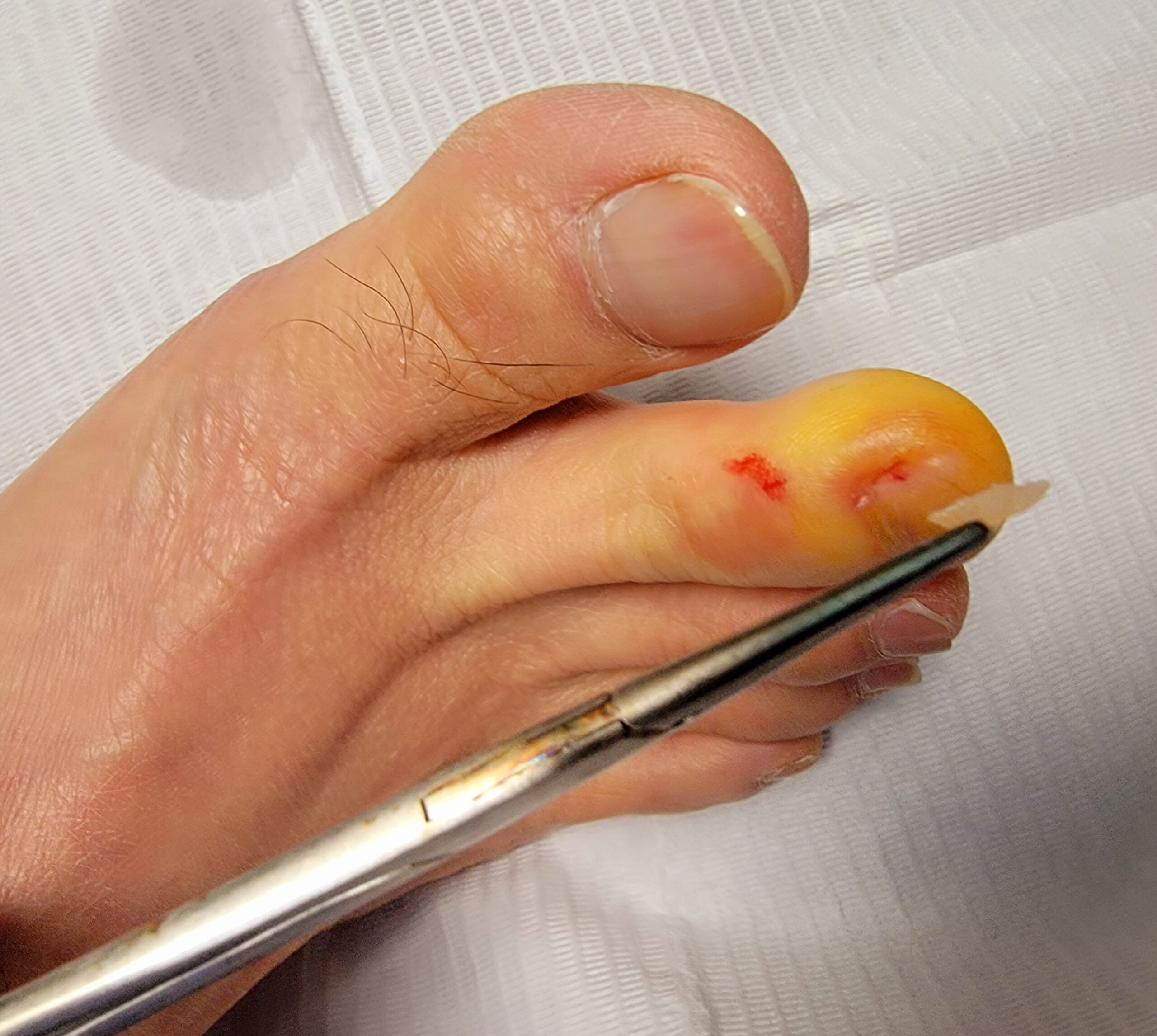Ingrown Toenails & How to Treat Them
If left untreated, an ingrown toenail can progress to an infection or even an abscess that requires surgical treatment
What is an Ingrown Toenail?
An ingrown toenail is a painful condition of the toe. It occurs when a sharp corner of the toenail digs into the skin at the end of or the side of the toe. This “digging in” of the nail irritates the skin, often creating pain, redness and swelling in the toe. If an ingrown nail causes a break in the skin, bacteria may enter and cause an infection in the area, which is often marked by drainage and a foul odor. However, even if your toe isn’t painful, red, swollen, or warm, a nail that curves downward into the skin can progress to an infection.
How to Know if You have an Ingrown Toenail
Any toenail can become ingrown, but the condition is more common in the big toes.

What is the cause of Ingrown Toenails?
Ingrown toenails can develop for various reasons. In many people, the tendency to have this common disorder is inherited. In other cases, an ingrown toenail is the result of trauma, such as stubbing your toe, having an object fall on your toe, or engaging in activities that involve repeated pressure on the toes, such as kicking or running. Trauma leads to the deformity of the nail. Another cause of ingrown toenails is wearing shoes that are too tight or short.
Your Podiatrist is Your Partner in Treating Your Ingrown Toenails
Anytime an ingrown toenail has developed into an infection (drainage, a fever, lighter skin surrounded by red skin, or worsening pain and swelling), see a podiatrist. Sometimes initial treatment for ingrown toenails can be safely performed at home. However, home treatment is strongly discouraged if you suspect you have an infection. Avoid attempting “bathroom surgery.” Repeated cutting of the nail can cause the condition to worsen over time. If your symptoms fail to improve, it’s time to see a foot doctor.
Treatment Options for Ingrown Toenails
If an infection is present, an oral antibiotic may be prescribed.

Surgical Treatment Options for Ingrown Toenails
CAN YOU SURGICALLY FIX INGROWN TOENAILS?
A simple procedure, often performed in the office, is commonly needed to ease the pain and remove the offending nail. Surgery may involve numbing the toe and removing a corner of the nail, a larger portion of the nail, or the entire nail. If this does not cure the condition, permanent removal is the next step. Various techniques may be used to destroy or remove the nail root. This treatment prevents the recurrence of an ingrown toenail. Your foot doctor will determine the most appropriate procedure for you.
3 Convenient Locations
Reisterstown
Address:
4 Glyndon Drive, Suite 2A
Reisterstown, MD 21136
Towson
Address:
7600 Osler Drive, Suite 105
Towson, MD 21204
Baltimore- Rotunda
Address:
711 W. 40th Street, Suite 351
Baltimore, 21211
Contact the Family Podiatry of Maryland Team
Interested in booking at one of our three convenient locations? Feel free to send us a message so we can reach out to you as soon as possible! We're here to help with all your foot and ankle needs.
